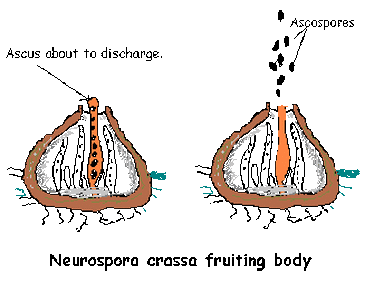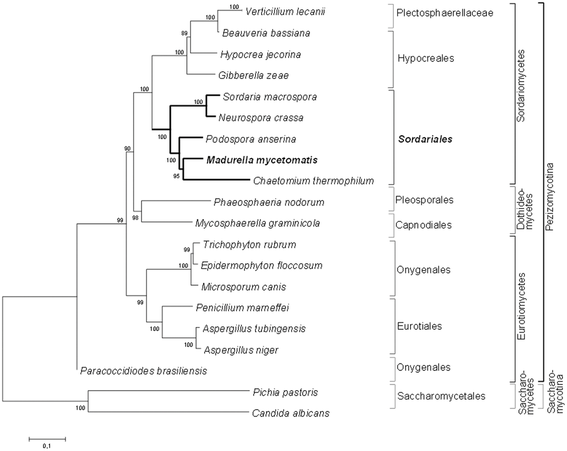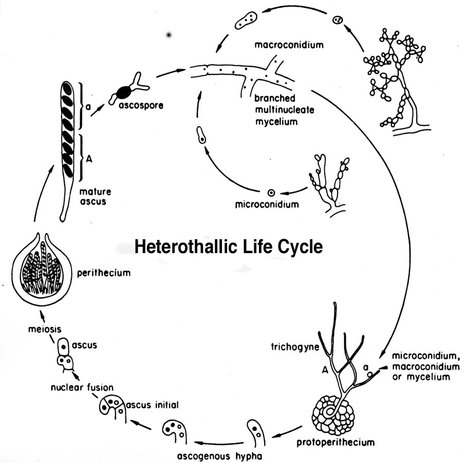Description:
- Member of the Ascomycetes (1)
- Commonly known as red bread mold (8)
- Eukaryotic multicellular fungus (7)
- Heterotrophic: Often uses burnt plant matter as a food source, also known to grow on bread and other food products (9)
- Known for its ability to germinate after forest fires; it helps to decompose burnt organisms (9)
Habitat(5):
- Historically thought to occur mainly in moist tropical and subtropical regions as a common, primary colonizer of plants killed by fire
- Recent surveys have found Neurospora colonizing trees and shrubs killed by wildfires in temperate regions, western North America and southern Europe, regions that are often cold and/or dry
 Ascus of Neurospora (6)
Ascus of Neurospora (6)
Reproduction(5):
- Spend most of their life cycles in the haploid state
- Heterothallic : there are two mating types that must unite to be able to go through the sexual cycle (which includes meiosis)
- Asexual part of the cycle: germination and growth of a conidium results in a mass of branched hyphae, which makes up a colony. A colony buds off millions more conidia from aerial hyphae, and these disperse and repeat the asexual cycle if they land on a suitable substrate.
- Sexual phase: when colonies of different mating type come into contact, their cell walls and nuclei fuse resulting in many transient diploid nuclei inside fruiting bodies called perithecia. Each diploid nucleus undergoes meiosis. The four haploid products of one meiosis stay together in a sac called an ascus. Each of the four products of meiosis undergoes a further mitotic division, resulting in an octad of eight ascospores within each ascus. Ascospores germinate and produce hyphae resulting in colonies exactly like those produced by asexual spores.
Interesting Facts(3):
- First historical report of N. crassa dates to 1843 when it was reported as a contaminant of French bakeries
- Used to demonstrate the one-gene-one-enzyme hypothesis and has provided novel examples of genetic and epigenetic gene silencing
- The study of mitochondrial function and biogenesis has benefited deeply from research


